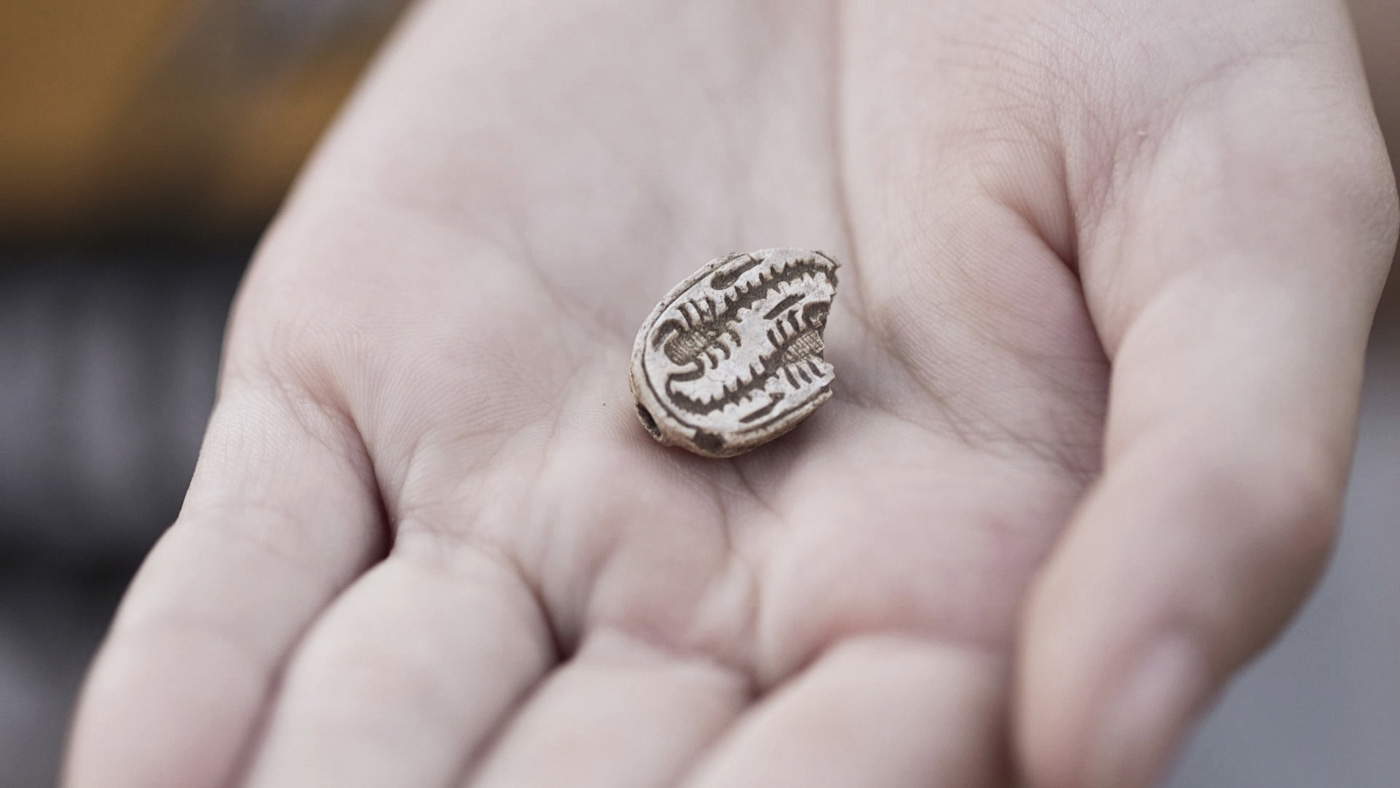During a family outing at the Tel Qana archaeological site near Hod Hasharon, Israel, 12-year-old Dafna Filshteiner found an ancient amulet in the shape of a scarab dating back some 3,500 years to the time of the Egyptian New Kingdom. “I was looking at the ground for porcupine needles and smooth stones,” Dafna says. “Suddenly I picked up an interesting stone. I saw a decoration on the stone, so we searched the Internet. There we found photos similar to what we had found. We realized it was something special and immediately called the Israel Antiquities Authority.”
Dafna and her family immediately reported the discovery to the appropriate authorities, contacting Mor Wiesel, an archaeologist with the Israel Antiquities Authority. The family was officially thanked with a certificate of excellence for their civic-mindedness, and the amulet was transferred to the state archives at the Jay and Jeanie Schottenstein National Campus for the Archaeology of Israel.
The amulet depicts a dung beetle, an insect considered sacred by the ancient Egyptians and a symbol of new life. The Egyptians revered it for its association with the life cycle, as it laid eggs in a ball of dung, from which new life was born. The amulet features an unusual decoration: two scorpions placed head-to-tail. According to Dr. Yitzhak Paz, a Bronze Age expert at the Israel Antiquities Authority, “the scorpion symbol represented the Egyptian goddess Serket, who was considered, among other things, the protector of pregnant mothers. Another decoration on the amulet is the nefer symbol, which means ’good’ or ’chosen’ in Egyptian. There is also another symbol that resembles a royal staff.”
Scarab-shaped amulets found in Israel, sometimes used as seals, testify to Egyptian rule in the region some 3,500 years ago and its cultural influence on the area. “The scarab is certainly a distinctive feature of Egypt, but their wide dissemination also reached regions far outside Egyptian borders. It may have been lost by an important and influential figure passing through the area, or it may have been buried deliberately. Because the find was found on the surface, it is difficult to know its exact context,” Dr. Paz explains.
Tel Qana is an archaeological site of great historical importance. According to Dr. Amit Dagan of the Department of Israel Land Studies and Martin (Szusz) Archaeology at Bar-Ilan University, and Dr. Ayelet Dayan of the Israel Antiquities Authority, who are conducting an archaeological excavation at the site, qThis discovery is exciting and significant. The scarab and its unique pictorial features, along with other finds discovered at Tel Qana with similar motifs, provide new information about the nature of Egyptian influence in the region in general and in the Yarkon area in particular."
The amulet is now on display in Jerusalem at the Jay and Jeanie Schottenstein National Campus for the Archaeology of Israel for all to admire.
 |
| Israel, 12-year-old finds 3500-year-old ancient Egyptian amulet in the shape of a scarab |
Warning: the translation into English of the original Italian article was created using automatic tools. We undertake to review all articles, but we do not guarantee the total absence of inaccuracies in the translation due to the program. You can find the original by clicking on the ITA button. If you find any mistake,please contact us.